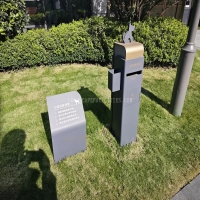Welcome to the website for landscape facilities products and knowledge.
How does the table’s design facilitate or hinder outdoor cooking or grilling setups?
When designing an outdoor cooking space, the table often becomes an afterthought. Yet its configuration directly determines workflow efficiency and culinary enjoyment. Unlike indoor kitchens with standardized counter heights, outdoor tables present unique challenges and opportunities for grill masters.
The primary consideration involves surface height. Standard dining tables measuring 28-30 inches force users to hunch over while preparing ingredients, causing spinal strain during extended cooking sessions. Professional outdoor stations incorporate multiple tiered surfaces: a lower 34-inch section for raw prep work, and a separate 36-inch height for serving. This zoning prevents cross-contamination while accommodating different postures throughout the cooking process.
Material selection equally impacts functionality. Teak and cedar offer natural weather resistance but require regular sealing near heat sources. Powder-coated aluminum withstands grease splatters yet conducts heat rapidly in sunlight. The most practical designs incorporate heat-resistant composite materials along the grill-adjacent edge, with natural stone inserts creating safe zones for placing hot utensils.
Mobility features transform static tables into dynamic cooking partners. Heavy stainless steel carts with locking casters provide stability during cooking while allowing repositioning based on wind direction. Contrastingly, built-in stone tables offer permanent food safety at the cost of adaptability. The emerging trend of modular table systems addresses this through interlocking units that create custom configurations for each grilling session.
Storage integration separates exceptional designs from basic tables. Shallow drawers maintaining 4-6 inch depth keep grilling tools visible and accessible, while deeper compartments with dividers organize fuel containers safely away from cooking areas. Waterproof compartments for digital thermometers and integrated paper towel holders demonstrate thoughtful detailing that streamlines the cooking process.
Surface geometry deserves equal attention. Round tables facilitate social cooking but waste corner spaces, while rectangular designs create efficient work triangles. The latest hybrid designs feature rectangular main surfaces with semicircular cutouts that hug grill contours, creating continuous workflow while maintaining conversation-friendly layouts.
Ultimately, successful outdoor table design acknowledges cooking as a kinetic activity. The relationship between standing position, tool placement, and social interaction dictates more than mere aesthetics—it determines whether your outdoor kitchen becomes a frustration zone or a culinary sanctuary. By prioritizing task-specific zones, heat-appropriate materials, and adaptable configurations, a simple table evolves into the command center of memorable outdoor dining experiences.
Related search:

Recommendation
Outdoor cat and dog feces trash can; Community pet trash can; Metal multi-color design